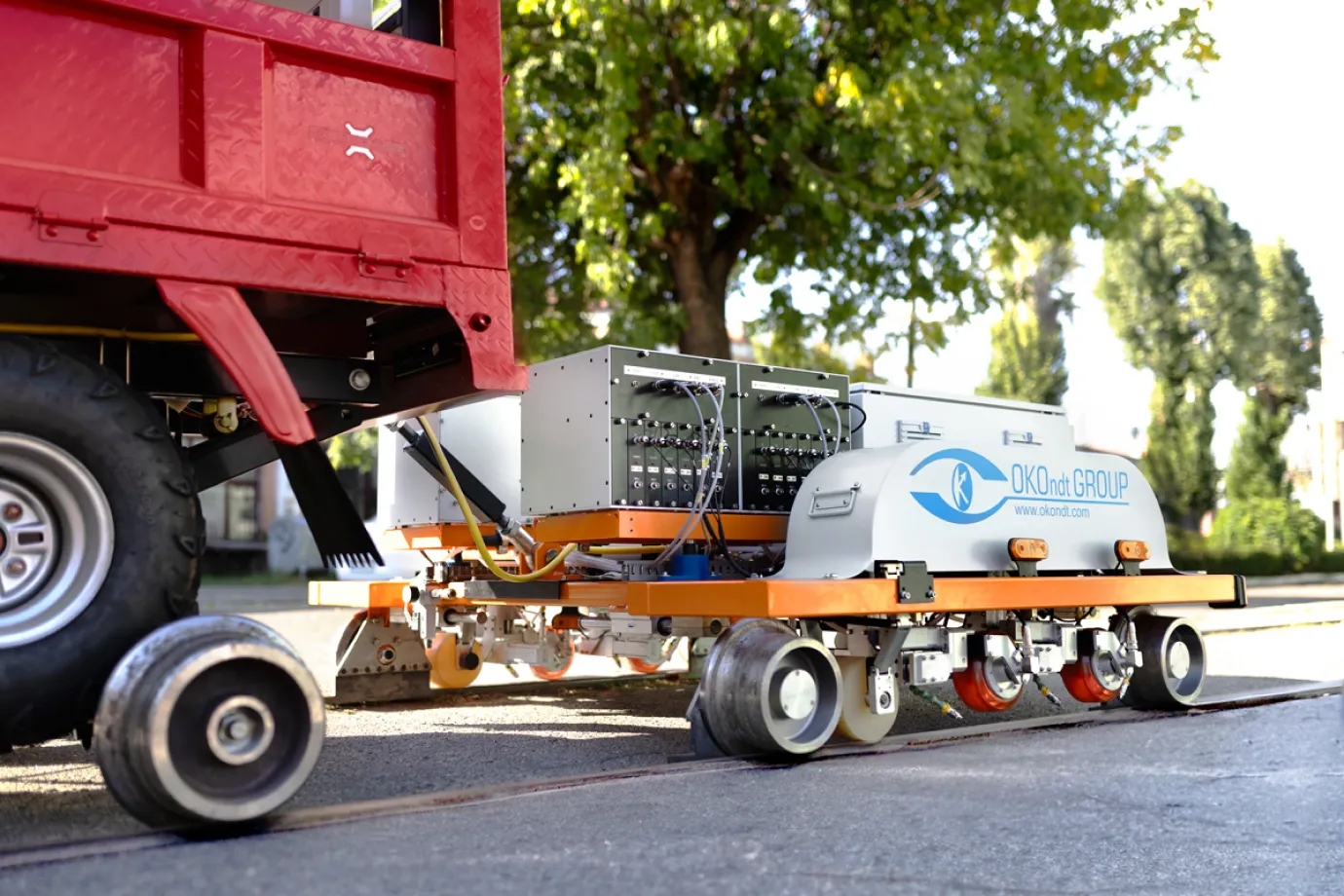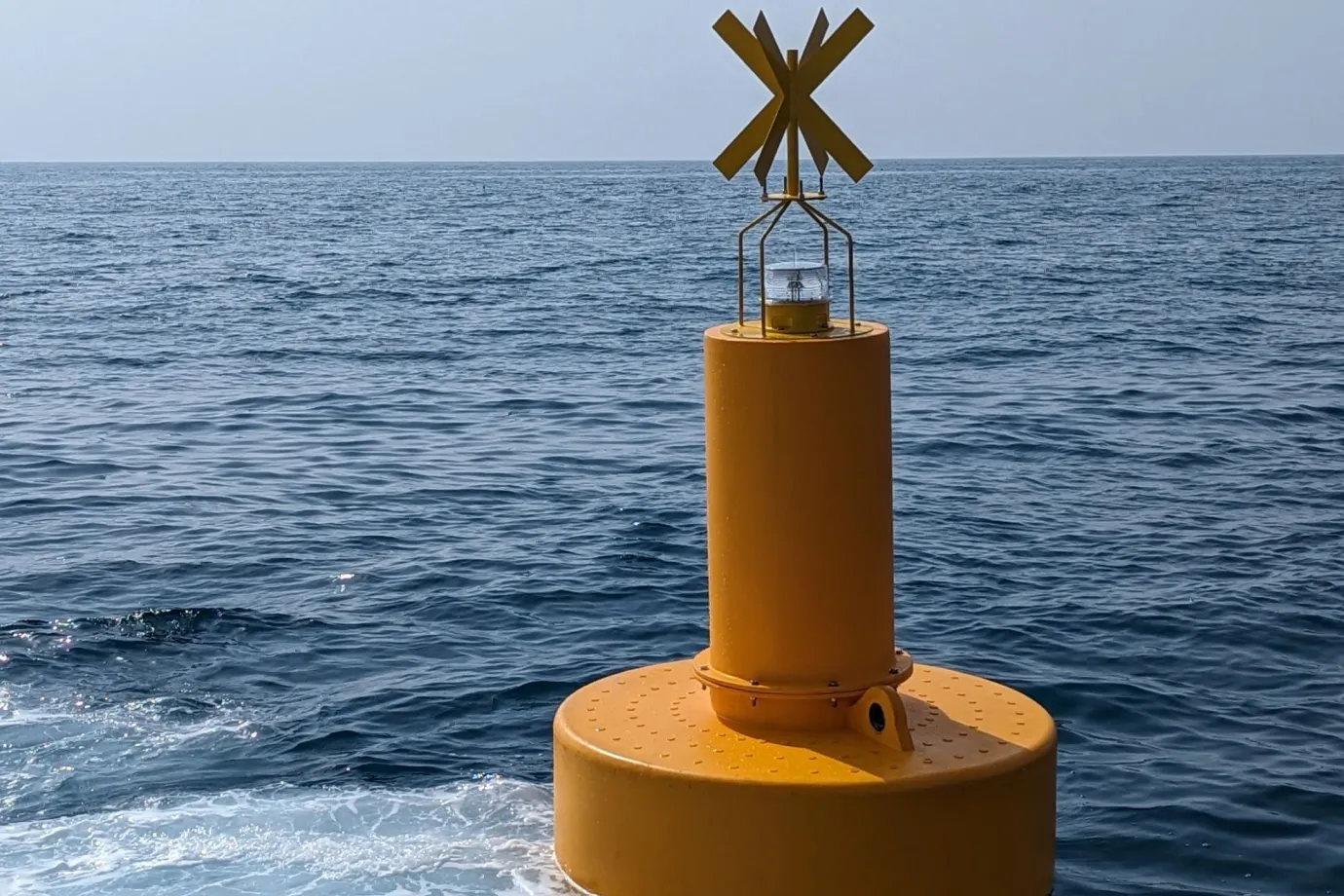Railway safety and operation depend on various factors, of which rail track integrity is a critical one. Two major methods used for the maintenance and inspection of rail tracks, ensuring their safety as well: Destructive and Non-destructive testing. Each of these methods includes various sub-methods that differ based on their technology and inspection process. Among the nondestructive testing methods, ultrasonic testing is a common and reliable one that is widely used in railway maintenance, ensuring track integrity. In this blog post, we will delve into the ultrasonic rail inspection methods and anything else you need to know.
Compact, rugged, and precise, our “ultrasonic flaw detector” is the ideal solution for modern rail maintenance teams.

What Is the Rail Ultrasonic Testing Method?

As mentioned above, Destructive and Non-destructive testing are two major methods used to inspect railway components. Destructive testing methods refer to destroying the railway components to detect their defects, while Non-destructive testing methods refer to inspecting the railway infrastructure without any destruction. Ultrasonic testing is one of the most common inspection methods that relies on nondestructive testing.
In this method, railway components are inspected using high-frequency ultrasonic pulses, commonly around 2.25 MHz. These sound waves are sent into the material and either captured by a separate receiver or by the same device that emitted them, once they reflect off internal flaws. Since ultrasonic waves travel through steel at a known velocity (typically about 5,900 m/s or 19,356 ft/s), the time it takes for the echoes to return can be used to calculate the location of any internal defects within the rail.
Learn more about “Ultrasonic Flaw Detector Applications” in our latest post covering rails, welds, wheels, axles, and overhead systems.
3 Most Common Ultrasonic Rail Inspection Methods

Rail ultrasonic testing methods are often used to detect surface or interior defects in rail tracks, including longitudinal cracks, weld failures, and corrosion. However, ultrasonic rail inspection methods vary depending on their mode of wave propagation, which plays a vital role in what defects they are able to detect. Here are the three most common ultrasonic rail inspection techniques:
Before choosing your inspection method, explore our in-depth guide on “Ultrasonic vs Eddy Current“
Pulse-Echo Rail Testing
Pulse-echo rail testing is one of the primary rail ultrasonic inspection methods in which just one transducer is used for sending out and receiving ultrasonic waves or pulses. Let’s take a deeper look at how this method works. The transducer emits a short pulse of ultrasonic energy into the rail track or component. If there are any discontinuities, part of the wave reflects back to the transducer. The time it takes for the echo to return helps determine the depth and size of the defect. Pulse-echo rail testing is widely used to detect surface and sub-surface defects, such as vertical split heads, transverses, and bolt hole cracks.
Angle-Beam Ultrasonic Testing

In the angle-beam ultrasonic testing method, a specialized transducer is used to direct ultrasonic waves into the rail track at specific angles, typically using a wedge to guide the beam. Directing the sound beam at a specific angle can effectively help to detect defects that are not perpendicular, like oblique cracks. The angle-beam ultrasonic testing method can be ideal for inspecting welded components in rail tracks.
Guided-Wave Ultrasonic Testing
Two previous ultrasonic rail inspection methods are suitable for the rail track surface and sub-surface, while the failures might be in deeper and hard-to-reach areas. Guided-wave ultrasonic testing is an efficient method that utilizes low-frequency ultrasonic waves that travel along the length of the rail, allowing for long-range inspection from a single test point. Therefore, this method is the best way to inspect the long-distance and inaccessible sections.
When Rail Ultrasonic Inspection Methods Meet Technology

Formerly, a handheld transducer was used to inspect rail components and detect their internal flaws. By moving the transducer along the rail surface, the real-time signals were interpreted, and the defect was detected. But over time, the development of technology has improved this process a thousand times more. Nowadays, the ultrasonic testing methods inspect the rail tracks automatically, including devices equipped with ultrasonic sensors to perform high-speed, consistent inspections over long distances. However, each manual or automated ultrasonic rail inspection offers benefits and challenges, which we discuss more in the following:
Manual Ultrasonic Rail Inspection: Benefits and Challenges
In traditional or manual rail ultrasonic inspection, the transducer that transmits the ultrasonic waves is handheld, offering high flexibility even for areas that rail automated systems or rolling stocks are hard to reach (e.g., complex track geometries, switches, and crossings). In addition, this method requires lower set-up and equipment, which significantly reduces the initial investment and costs. However, manual ultrasonic rail inspection offers a longer and more complex process due to covering less rail components at the same time. A skilled operator is also required to move and set up the equipment properly and provide a qualified inspection of the rail components.
Automated Ultrasonic Rail Inspection: Benefits and Challenges

When it comes to automated systems, high speed shows up! Automated ultrasonic flaw detectors are able to inspect the rail tracks with maximum speed and minimal interruption to rail traffic. By using cutting-edge technology, these automated systems provide a consistent, repeatable inspection with minimized human error. However, automated ultrasonic flaw detectors require a higher initial investment than manual ultrasonic inspection. Moreover, it can be challenging to inspect the complex rail track geometries in this method.
Which One Is Better? Manual or Automated Ultrasonic Rail Inspection Methods?
Both manual and automated rail ultrasonic inspection methods include some advantages and disadvantages. Regarding the precision and speed the automated ultrasonic flaw detectors offer, this method is more efficient. But it is critical to use a reliable device that inspects the rail tracks properly to detect both surface and interior defects, ensuring railway safety and operation more than ever.
Conclusion
In summary, safety is a top priority in the railway network, and accordingly, regular maintenance and inspection play a critical role in this industry. Ultrasonic testing is a Non-destructive testing method that uses ultrasonic waves to inspect the rail tracks and detect their surface or interior defects that affect railway safety and operation. In this article, we proceed with common ultrasonic rail inspection methods in detail and also compare the automated and manual ultrasonic flaw detectors, a comprehensive guide to ensure safety of the railway.




